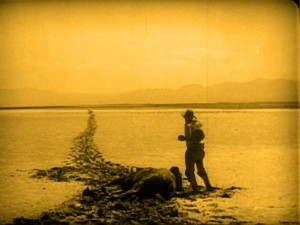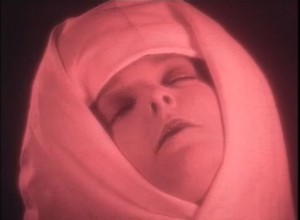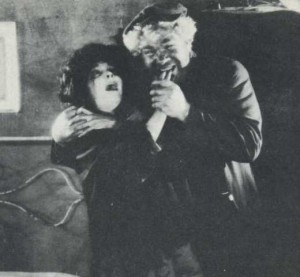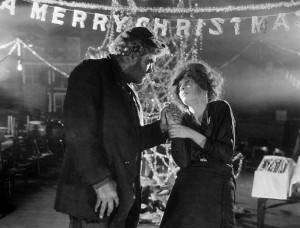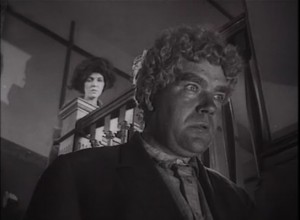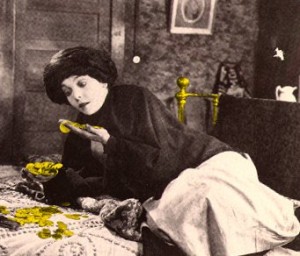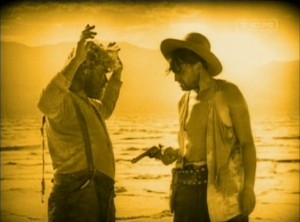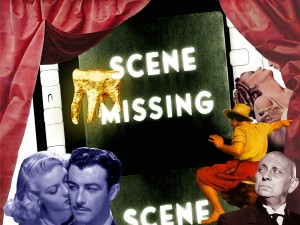I hadn’t originally intended to watch this film again, for the umpeenth time, when it was shown late last night on Turner Classic Movies, but as soon as I noticed the exquisite tinting and the (uncredited but fabulous) music score on the print they were showing, I couldn’t resist. (Apparently — or at least hopefully — the same print is available for online viewing.)
I can’t think of another film in the history of cinema in which hands are more expressive, in a multitude of ways — a motif that may be even more telling than the gradual evolution of Mac and Trina’s wedding photo, half of which eventually becomes the wanted poster for Mac’s arrest.
Too much of the writing about Greed (mine included) has been concentrated on the legend of the filming and the subsequent cutting and not enough about what remains, entirely visible and triumphant, in what remains and is fully visible.
A lot has been written about the relationship between the fates of Greed and The Magnificent Ambersons in terms of their eviscerations, and not enough about the major differences between the ways that they’re edited in their surviving forms.(Perhaps the most neglected but significant common point between the films is the unerring sense of camera angles in the staging of both films.) I’ve never pointed this out before, but June Mathis’s editing of the release print is both sensitive and masterful, not only as storytelling but as a way of paring down and concentrating the original to a conventional length. Surely this is why we continue to regard Greed as a masterpiece in its surviving form, which can’t be said of the release version of Ambersons. The elimination of the two major subplots is a logical and reasonable approach to what otherwise would have been an unworkable task. (The only remaining traces of this missing material are one brief shot of Maria with some of her neighbors when Mac is walking out on Trina and a shot of the solid gold service that forms the basis of Maria’s crazed fantasies used as one of the “symbolic” shots concerning gold and avarice — awkward lapses, to be sure, but both are brief and incidental.)
Two more points, neither of which I can adequately illustrate here: (1) The extraordinary hand-painting of yellow details throughout the film in the print shown on TCM — a giant tooth to promote dentistry, gold coins, a wedding ring, the two canaries — functions as a beautifully complex symbolism in terms of the film’s didacticism about what money and glitter and fantasy does to human personality, undercutting many of the more simplistic equations made elsewhere in the film. Furthermore, the strategy of tinting the final Death Valley sequences a sort of burnt yellow — which necessitates a blue-gray background for the shots when the coins and canaries figure — functions musically as well as thematically.
(2) How many viewers have noticed or drawn attention to the fact that the Lester Memorial Kindergarten, where Trina works as a scrubwoman and where Mac eventually murders her for the $5,000 of coins, is racially integrated? A fascinating remnant of the progressive spirit of the Bay Area that can be traced back to Frank Norris’s family background, because his mother was on the school board.
POSTSCRIPT: This just in from Mark Rappaport:
[6/15/15]

